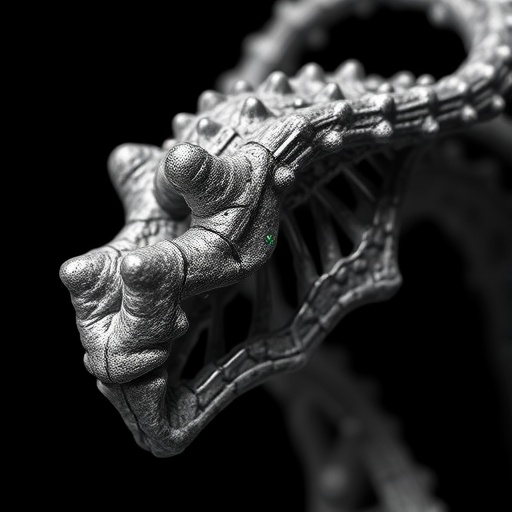In a groundbreaking study, researchers Gao and Hua have ventured into the realm of image processing and restoration, leveraging the power of backpropagation neural networks augmented by a hybrid genetic algorithm. This paradigm promises to significantly enhance image restoration techniques, making it a critical development in fields such as computer vision, biomedical imaging, and digital photography. The complexity of accurately restoring images compromised by noise or distortion has long posed a challenge, but the proposed algorithm offers a compelling solution.
At its core, the backpropagation neural network is a type of artificial neural network that excels in supervised learning tasks. It utilizes a systematic approach to minimize the error between the predicted output and the target output by iteratively adjusting the weights of the network. This mechanism operates through a forward pass, where inputs are transformed into outputs, followed by a backward pass for error correction. When applied to image restoration, this technique can reverse some deterioration caused by various forms of noise, providing a clearer and more accurate representation of the original image.
However, while backpropagation alone offers powerful capabilities, its efficiency can be limited by local minima problems. This is where the incorporation of a hybrid genetic algorithm comes into play. Genetic algorithms are inspired by the principles of natural selection and evolution, emulating processes such as selection, crossover, and mutation to optimize solutions. In their study, Gao and Hua have ingeniously combined these two methodologies, allowing the genetic algorithm to fine-tune the parameters of the neural network, thus achieving superior performance in image restoration tasks.
Through extensive experimentation, the authors illustrated the efficacy of their hybrid model. They tested the algorithm on benchmarks widely recognized in the image processing community and demonstrated that their approach outperformed existing methods in various scenarios. The innovative use of both backpropagation and genetic algorithms not only enhances the accuracy of image restoration but also reduces computational time, making it a viable option for real-time applications.
In practical terms, this research opens a myriad of possibilities across several domains. For instance, in the field of biomedical imaging, where precise imagery is crucial for diagnostics, the ability to restore images affected by noise can vastly improve interpretability and accuracy. In digital photography, where images may suffer from various imperfections, this algorithm can pave the way for clearer and more vibrant pictures. The potential applications of this research extend even further, touching on areas such as video enhancement, art restoration, and augmented reality.
Furthermore, Gao and Hua’s methodology could also inspire further investigations into hybrid algorithms combining neural networks with other optimization techniques. As the fields of artificial intelligence and machine learning continue to evolve, the interplay between different algorithmic strategies could yield even greater advancements, pushing the boundaries of what is achievable in image processing.
The synergy found in merging backpropagation neural networks with hybrid genetic algorithms reflects a larger trend in AI research, where interdisciplinary approaches are becoming increasingly commonplace. This trend could lead to more robust and flexible models that can adapt to various problems with greater efficiency. In doing so, the research also emphasizes the importance of cross-pollination among different methodologies, promoting a collaborative spirit in the quest for ever more sophisticated AI systems.
Curiously, this study also provokes questions regarding the limits of these technologies. As we enhance our capabilities in image restoration, we must also consider the ethical implications surrounding the manipulation of images. Clarity and accuracy are paramount, but at what cost? It is crucial for researchers to establish guidelines that govern the use of such powerful tools, ensuring they are employed responsibly and transparently.
Additionally, the adaptability of the proposed model signifies a shift toward more generalized AI systems that can learn from various types of data. This characteristic could facilitate advancements in adaptive learning environments, where algorithms continuously improve from new inputs. Gao and Hua’s research highlights the potential of hybrid modalities in creating AI that not only learns but evolves.
In conclusion, the innovations presented by Gao and Hua may revolutionize the field of image processing, aligning with the rapid advancements in artificial intelligence and machine learning. The combination of backpropagation neural networks with hybrid genetic algorithms represents a critical step forward, demonstrating how multi-faceted approaches can solve complex problems. As we stand on the precipice of further advancements, one can only anticipate the transformative effects of these techniques across numerous applications in the future.
This research not only encapsulates the ingenuity of combining diverse techniques but serves as a reminder of the limitless possibilities that await in the intersection of technology and creativity. As Gao and Hua prepare their findings for publication, the scientific community eagerly anticipates the ripples their work will likely create in the wider fields of art, science, and technology.
Subject of Research: Image Restoration Algorithms
Article Title: Backpropagation neural network based image restoration algorithm optimized using hybrid genetic algorithm.
Article References:
Gao, Q., Hua, T. Backpropagation neural network based image restoration algorithm optimized using hybrid genetic algorithm.
Discov Artif Intell 5, 239 (2025). https://doi.org/10.1007/s44163-025-00493-5
Image Credits: AI Generated
DOI: https://doi.org/10.1007/s44163-025-00493-5
Keywords: Image processing, neural networks, genetic algorithms, image restoration, artificial intelligence.
Tags: backpropagation neural networksbiomedical imaging advancementscomputer vision techniquesdigital photography optimizationenhancing image clarity and accuracyerror minimization in neural networkshybrid genetic algorithmimage processing methodsneural network image restorationnoise reduction algorithmsovercoming local minima in optimizationsupervised learning in AI





